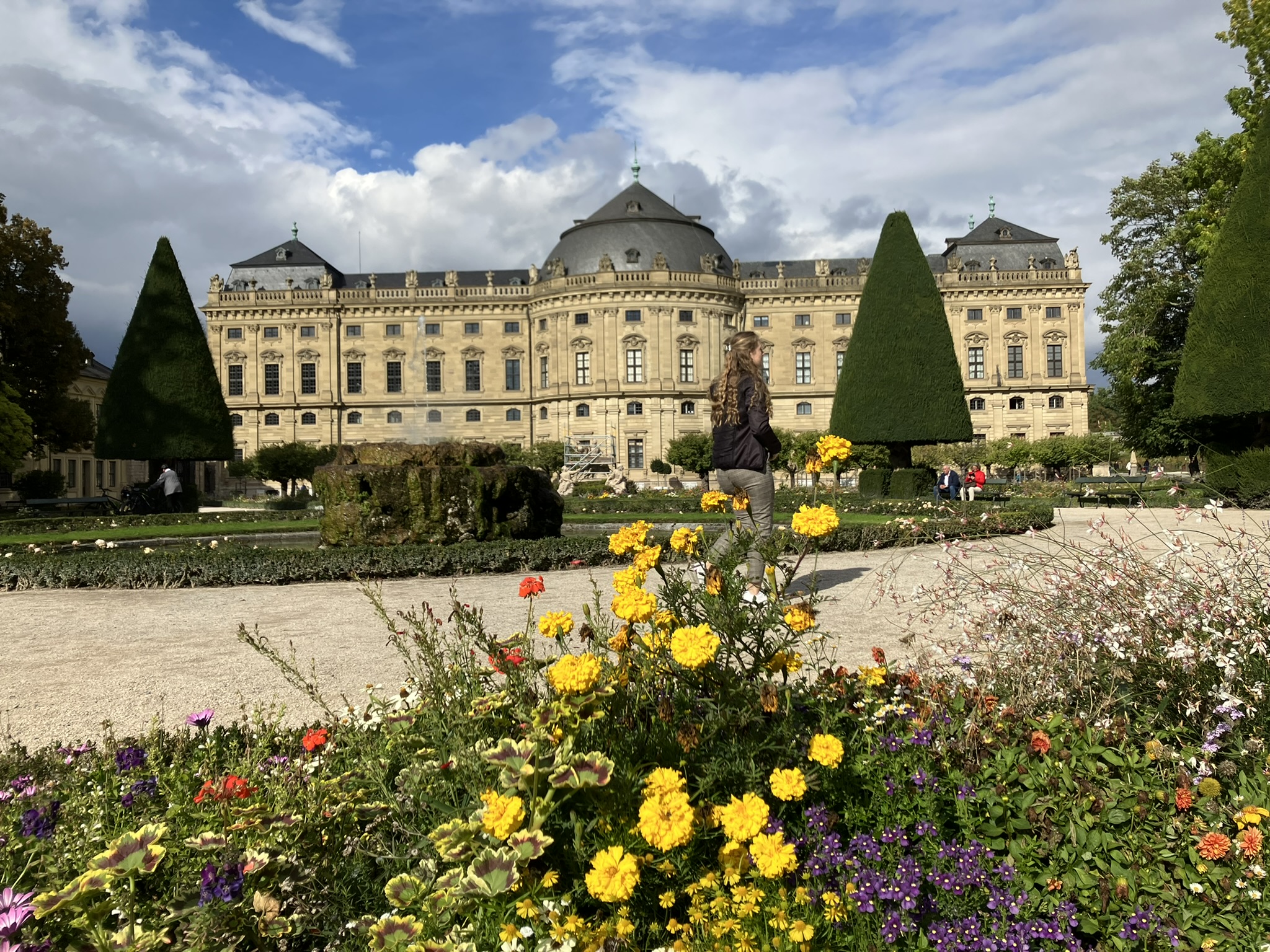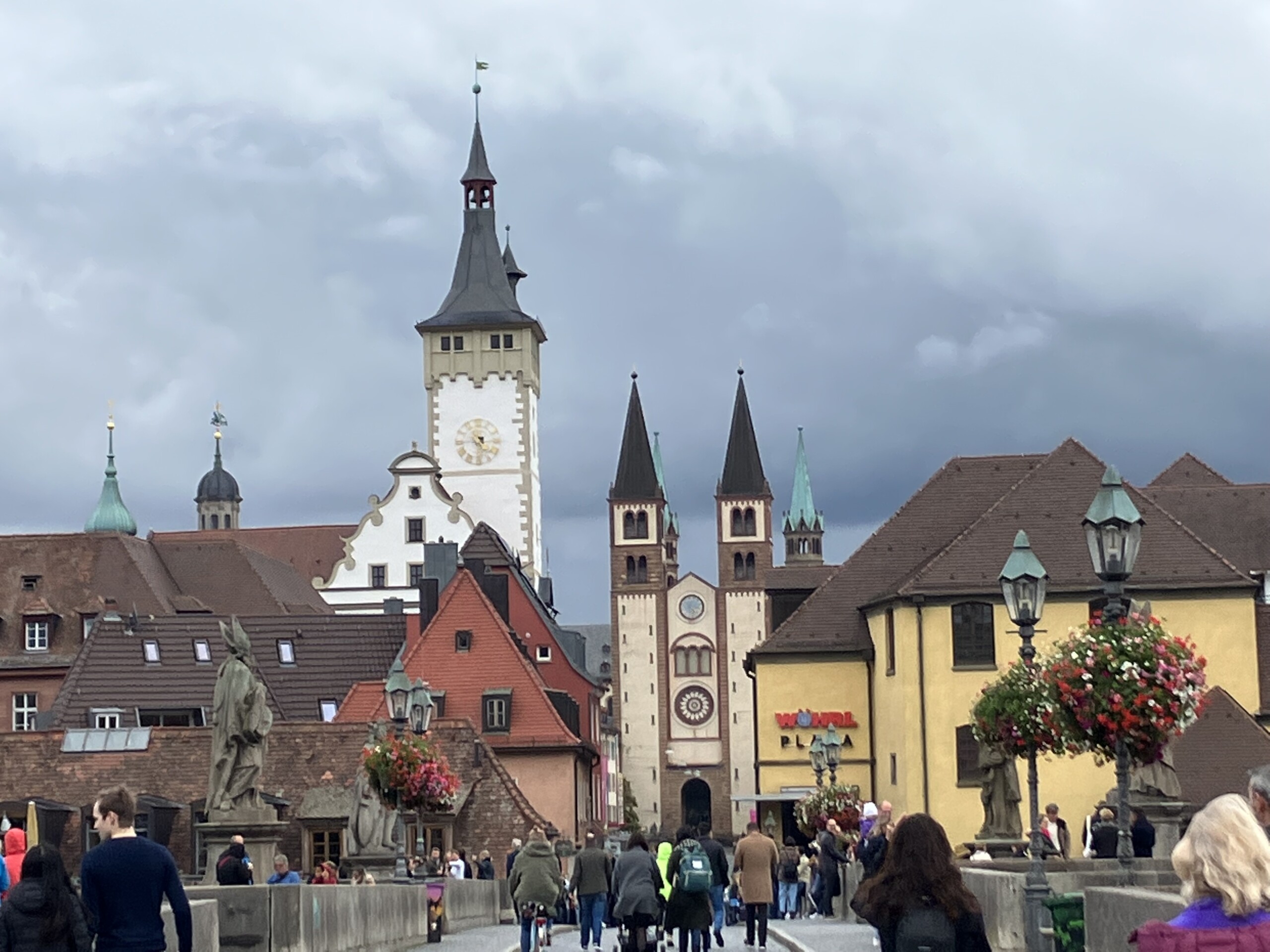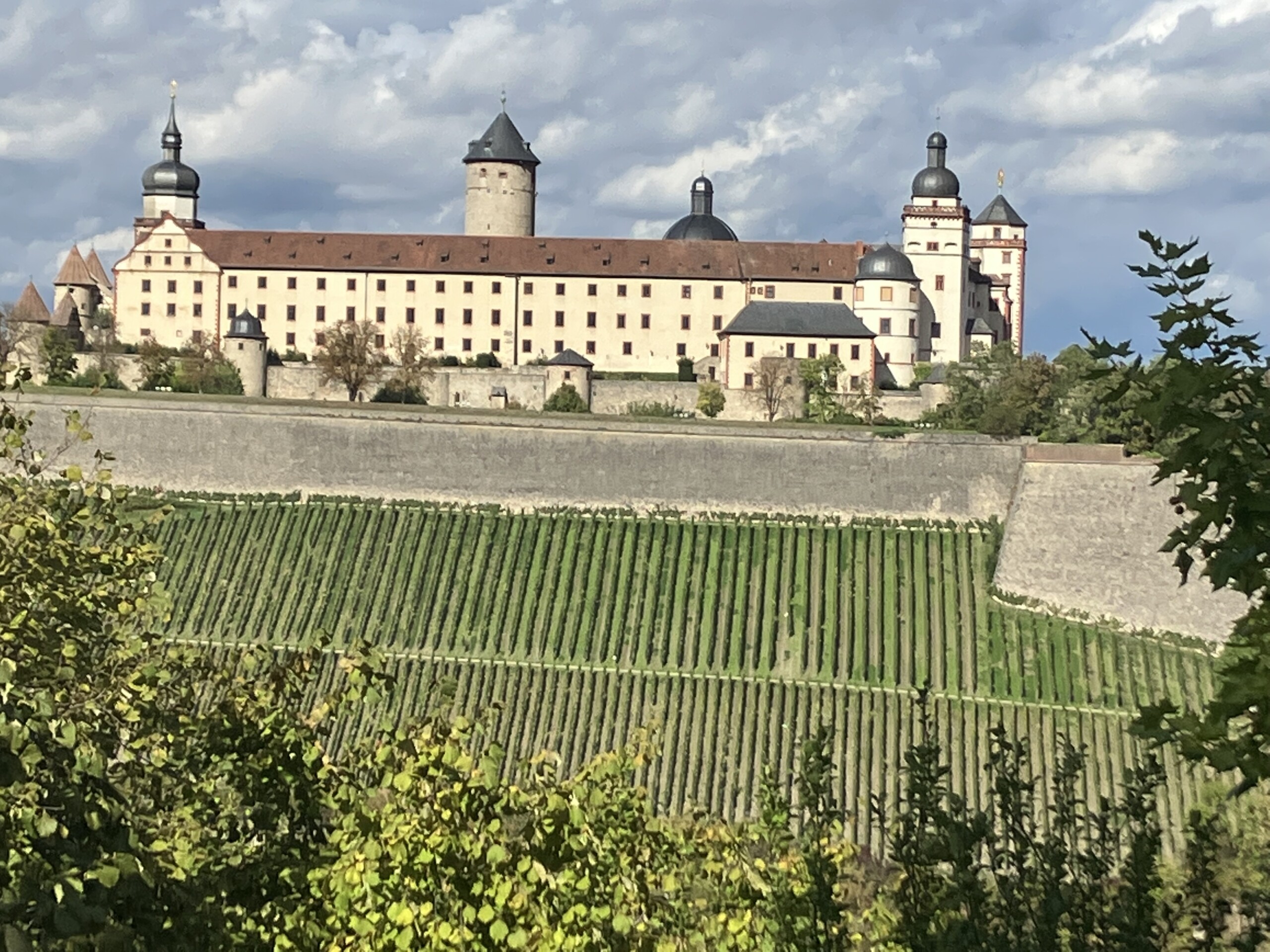By the way, it rains every day in Germany but not real rain, and I stand by that until we have a dropless day. Today another very grey cloud came to town but it just dampened us a little. On the other hand it has only rained once where we got drenched and that was my mistake. Also the good thing about clouds is I find they can make an ordinary photo shot better.
Today we decided to have a day exploring the town because it has a lot to offer, probably more variety and higher quality than we have seen so far, but the other towns have been superb. This is also the first time we have entered Bavaria as we move from the Lutheran north to the Catholic south.
Wurzburg is known as a glamorous baroque city with imposing buildings looking down on the just as impressive buildings below including the largest Romanesque church in Germany. It is hard to turn a corner without seeing an architectural marvel. One of those on the hillside is a castle surrounded by steep sloping vineyards with grapes of the Hofkeller variety where the climate also helps to make it a very good wine. A steep stair climb took us to the unheralded Kappele with its understated paintings and spectacular view over the red roof city.
There is a mineralogy museum which I know you geologists would love because the brochure said they are wonderful. For the art lover there is a floating art gallery with mostly contemporary art on the side of a very calm river and above is a 12th century 200 metre long bridge which is also where you get to taste the wine below the castle.
There is a lot more but the crowning glory is the palace. The pamphlet calls it the most homogenous and extraordinary piece of French and Viennese architecture you’ll ever see, and built with the use of northern Italian palace construction methods. The last thing I did in Wurzburg was to gape at the amazing paintings on the ceiling of this palace and then walk up the impressive staircase to be then overwhelmed by the world’s longest continuous fresco created by Giovanni Tiepolo and Johann Bossi, how about that?
These icons were long distances apart so as much a walking day as a watching one.
And do you know who invented the X-ray?
It was a German Physics Professor, Wilhelm Conrad Rontgen from Wurzburg.




The photos are spectacular! What are you using? Camera? Phone? Ipad?
We are having thunderstorms and hail tonight ⚡️🌨
Happy walking.
Yvonne xx
Our dearest intrepid travelers! Glad to see you are still going strong! Wurzburg looks incredibly beautiful. What a gem. We adore these beautiful German villages towered over by hillsides of vineyards, not to mention the wine! I can see that already it’s a tad chilly over there however at least you don’t have to worry about getting sun-burnt judging by those ever-looming clouds that have decided to follow you and keep you company on your on your walk. You haven’t mentioned much about the gorgeous pastries and tortes yet, which I am sure are totally amazing, as I’m sure the rest of the cuisine is.
Although it seems based on your delightful bloggings that so far you don’t need any encouragement from us ‘arm-chair travelers’ back here to continue with your mission, we are sending you our love and biggest hugs for now and looking forward to seeing you when you arrive back. In the meantime continue to enjoy your amazing journey and keep well, and dry if at all possible!
Xxxxx
I like your pics is that Corrie in the white top in this quaint place?
Dear Corrie and Will,
‘How about that’ indeed!
Marvellous that distance incorporated not only your required walking length but also a cultural feast (or maybe later fest!, as you two earned it!)
Good on mr Roentgen for his very useful discovery
Certainly it sounds like a good day, and more wonderful stories for later.
Glückliches Gehen!
Hope there’s nice food for you xx